#IBM cloud
Photo
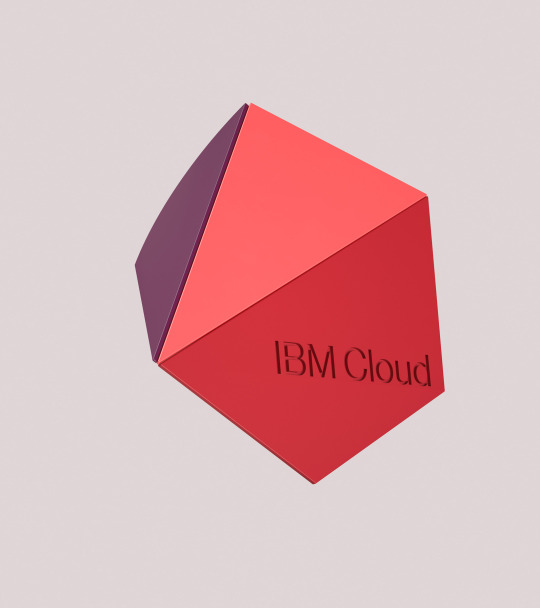
Athletics / IBM Cloud / Rendering / 2016
31 notes
·
View notes
Text
Utilizing IBM Cloud VPC images to maximize their potential
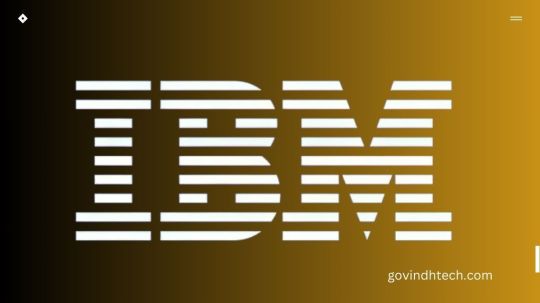
Maximizing Performance with IBM Cloud VPC Images
IBM Cloud VPC instances are created using images. Choose a stock, custom, or catalog image based on your needs. What are stock pics?
What are stock images?
The default operating system for IBM Cloud VPC environments is a stock image. It deploys virtual or bare metal servers of various architectures.
These images have all the configurations needed to provision a server and deploy instances quickly. IBM updates stock images, but users should apply the latest vendor fixes and packages when provisioning an instance.
IBM offers many alternatives. On IBM Cloud VPC, IBM support Red Hat Enterprise Linux, Windows Server, SUSE Linux Enterprise Server, Debian, Ubuntu, Rocky Linux, CentOS Stream, and Fedora.
IBM will follow each vendor’s end-of-support (EOS) dates for most of these images. IBM will assign stock photos three statuses based on their stage to manage their lifecycle:
Available
Deprecated
Obsolete
If an OS is supported by the vendor, IBM’s current stock image will always be “available”. Outdated versions will be marked “deprecated”. Stock photos with vendor-set OS expiration dates are marked “obsolete”.
Remember that you can launch instances using available and deprecated instances, but not obsolete stock images.
Stock photos may be deployed and used immediately for any purpose, which is a major benefit. Custom images can be made from stock photographs.
Instance deployment using stock pictures
1. Click Change image on the instance creation page’s image and profile section.
2. A side panel will display all stock photos for architecture selection:
3. Type the OS name into the filter on the Stock pictures tab, pick it, and click Save:
4. After closing the side panel, the UI should show the new stock image:
Describe custom images
Customers develop virtual servers using custom operating system images with their own specifications. Antivirus, databases, and other software can be added to custom images. You can generate a custom picture by leveraging an existing instance with a customized base stock image or by creating and importing it on-premises.
Custom image owners set the image status (available, deprecated, or obsolete), unlike IBM for stock photos.
End-of-support (EOS) photos are not instantly “deprecated” like stock photographs, but the same rules apply. Planning the lifecycle of your images will save your firm time and resources and help it innovate by adopting the newest OS versions.
Custom images let you preserve your settings and setups. Use a custom image to deploy more instances in the same area, control their lifespan, and export and import into another region to deploy instances there.
Custom image creation
1. Select Images and click Create on the VPC menu.
2. Name your custom image.
3. You can customize an instance image. Stop the instance before creating the custom image.
4. Select an instance’s boot volume to create a custom image. Like the previous step, halt the instance before creating the custom image.
5. You can import Cloud Object Storage images. You must save the picture in a COS bucket and specify the base operating system when importing.
6. Provide the picture file URL and base OS to import from COS.
7. Choose encryption.
8. Custom image lifecycle management is optional. You can set the deprecation date, obsolete date, or both in advance by date or days.
Custom image instance deployment
1. Click Change picture under picture and profile.
2. After choosing the architecture type, choose Custom images, select the custom image you need to deploy an instance, and click Save.
What are catalog images?
Catalog images are bespoke images you or an IBM partner add into a private or public catalog. Other cloud providers call them marketplace images. Each catalog image will include an IBM Cloud Catalog tile. Only virtual servers support catalog images; bare metal servers are not supported.
Enterprise accounts can exchange custom photos via private catalogs. Multiple accounts (or selected accounts) within the same enterprise can have product access managed. The only restriction is that encrypted images cannot be cataloged and must be “available”.
Image lifecycle management at the catalog level includes “available,” “deprecated,” and “obsolete” states. Set the following catalog statuses:
The Catalog lists “available” as “published/verified” in VPC.
“Deprecated” is the same in VPC and Catalog.
The Catalog lists VPC “obsolete” items as “archived”.
IBM Partners and ISVs can share IBM Catalog pictures using public catalogs. Partners and ISVs must undergo onboarding before publishing photographs publicly from the collection.
IBM partners can only accept free products today. In future project deliveries, they will be able to onboard charged images and get paid by IBM customers for consumption, exactly as other cloud providers in their markets.
Using catalog images to deploy instances
1. Select Change picture under picture and profile.
2. Select a catalog image from your account under the Catalog images tab.
3. Click Save and create instance.
Learn more
IBM offer several business images depending on your goals.
Stock images are best for quickly deploying instances. Custom images are best for replicating or moving setups to different regions or zones. Finally, a catalog picture is best for using the photographs of a trusted third-party seller or sharing them within your company.
Read more on Govindhtech.com
#technology#govindhtech#technews#news#ibm cloud#ibm#ibmcloudvpc#stock images#Catalog Images#Custom Images
0 notes
Text
IaaS: The Future of Infrastructure Management in the Cloud Era
Infrastructure as a Service (IaaS) is a cloud computing service model that provides virtualized computing resources, such as servers, storage, and networking, over the internet. Read more...
Infrastructure as a Service (IaaS) is a cloud computing service model that provides virtualized computing resources, such as servers, storage, and networking, over the internet. In an IaaS model, clients can provision, manage and scale computing resources on-demand, and pay for only what they use. IaaS providers use a multi-tenant architecture to pool computing resources, and clients can choose…
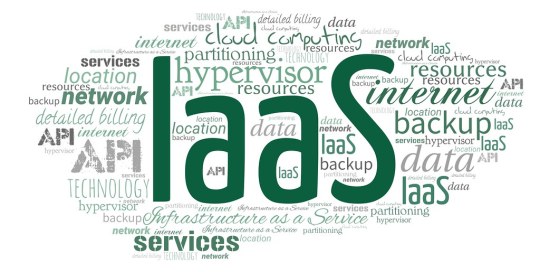
View On WordPress
#amazon web services#big data analytics#Cloud Computing#Cloud cost optimization#Cloud infrastructure management#Cloud migration#Cloud security#Development and testing#DigitalOcean#disaster recovery#E-commerce#Gaming#google cloud platform#Hybrid cloud#IaaS#IBM Cloud#Infrastructure as a Service#machine learning#Microsoft Azure#Oracle Cloud Infrastructure#Private cloud#Public cloud#Virtualization#Vultr#Web hosting
1 note
·
View note
Link
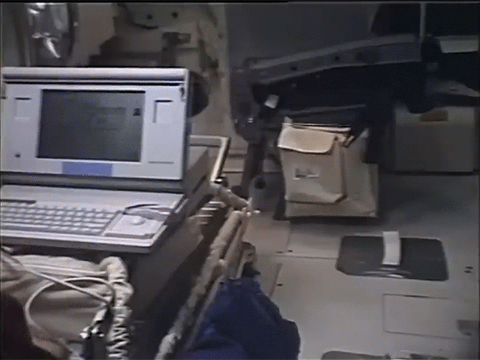
~DIGITAL ALZHEIMER’S DISEASE~
#ROM#RAM#programming#yahoo#google#twitter#cloud storage#microsoft#geocities#memory#instagram#IBM#archive#libraries#facebook#tumblr#internet#information technology#technology
145 notes
·
View notes
Text

USA 1990
#USA1990#ELECTRONIC ARTS#BINARY SYSTEMS#RPG#SIMULATION#IBM#AMIGA#MACINTOSH#STARFLIGHT 2 TRADE ROUTES OF THE CLOUD NEBULA
53 notes
·
View notes
Text
Virtual spaces in a grid

Drawing about theme of virtual space. Such a grid. Which often you can see as a theme for wallpaper. If to surf net. So, it is a typical image, it is connected with aesthetic of retro wave. And everything that is similar, like 8 bit, virtual space, retro wave. And it is now a moment for me to create something like this, image with space made of grid. I was all the time impressed how other can do this.
And this is my drawing about the same theme. Two pictures. One is made in palette with parameters CGA RGB Color OFF, and second is made with palette from Nes 8 bit.

Let’s move to grid CGA. At first. We have here a space. With clouds and stars. It is simply space. Dreams in retro clouds. Flight amongst the clouds. Retro. And not to be lost here - there is a grid here. For navigation in this space. It is more simple space. You can test flight here. Or just walk. There is no gravity here.

And now let’s move to space Nes 8 bit. It is a filed. With chamomile or sunflowers. 8 bit flowers and grass. So here it is going a raining. Which is giving water to little flowers. It is already more made retro 8 bit space. It exists with more length in time. And it is updated with objects. So, here it is gravity. And already plants are growing. Clouds are making a rain. And you can have a walk into this 8 bit field.
Maybe to remember your country house memories. As you play 8 bit Nes videogames at the country house. For example. Or some another system. Watched VHS videotapes. Moment of nostalgia about 80s. 8 bit field is calling you to run here. And get yourself under the rain. And with a fun to run back to your house.
Grass is such green and so familiar, which you can see in the field. Chamomile and sunflowers also are well known for you. Even form of clouds, looks like, is taken from 8 bit games from cartridges. From some kind Adventure Island. But, well, no, not out of this game. Grass will grow. And maybe even birds will fly and a little house to appear.

Dima Link is making retro videogames, apps, a little of music, write stories, and some retro more.
WEBSITE: http://www.dimalink.tv-games.ru/home_eng.html
ITCHIO: https://dimalink.itch.io/
GAMEJOLT: https://gamejolt.com/@DimaLink/games
BLOGGER: https://dimalinkeng.blogspot.com/
#8 bit#16 bit#nes#snes#megadrive#ibm pc#ms dos#retro#retro aesthetic#pixel art#virtual#virtual space#grid#cyber#techno#sunny#sunflower#chomomile#raining#clouds#field#country house#8 bit aesthetic#cga#16 colors#space#liminal spaces#surf#net#net art
7 notes
·
View notes
Text
My latest article: An IBM watsonx AI tool helps refactor COBOL mainframe code into Java, to make it easier to maintain and extend for folks who entered the workforce after the disco era.
4 notes
·
View notes
Quote
Eye Original America Online [AOL] POWERS THAT BEE... Mathematically Articulating Computerized [MAC] OPERATING SYSTEM [OS = macOS] LAWS… Digitally Written by My GOLDEN 9 Ether Human ANUNNAQI [HA = HARRELL] DNA CONSCIOUSNESS [D.C.] of Intuitive MENTAL [I’M] MEMORIES of Intellectual [MI = MICHAEL] PROPERTY RIGHTS 2 ALL Unicode Software [U.S.] AUTOMATED [USA] on My Hi:teKEMETICompu_TAH [PTAH] Pentagon INVENTION of Militarized [I’M] 6G Quantum Interactive [Qi] Data CLOUD [D.C.] Language Networks… SECURELY AUTHENTICATING... Apple's TERMINOLOGY TEXT [AT&T] MESSAGING SERVICES @ Ægiptian QHT IBM [Qi] Apple in Downtown [A.D.] 2023 [VII] San Diego CA
ENQI UFO [ARK] ANGEL MICHAEL NUDIMMUD MU:13

america extremely slow online

EYE PLAY THE GAME BETTER THAN YOU
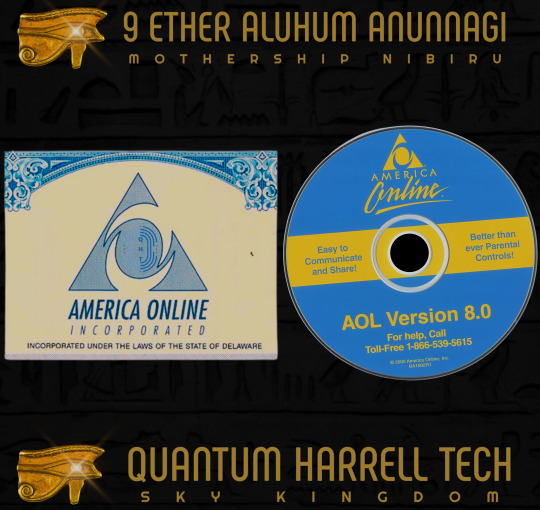







CLANDESTINE NEUROMELANIN MILITARY BUDGET TECHNOLOGIES

EYE PATENTED & MONETIZE MY GOLDEN COSMIC GOD MEMORY OF INTUITIVE ANTIMATTER MELANIN [I AM] @ THE AMERICAN PENTAGON




















6G QHT INTERNET [Qi] UNHACKABLE SINCE 1968 [VI]



#quantumharrelltech#harrelltut#enqiback#6g quantum cloud computing tech#MU:13 Occult Tech Illuminati#APPLE#AT&T#ATT#IBM
2 notes
·
View notes
Text
AI is helping lot of tech user intheir work degree is useless says IBM's AI cheif .

View On WordPress
0 notes
Text
AS400 Migration to Cloud the Ultimate Solution to Legacy AS400 Applications
The advent of cloud computing has opened new avenues for numerous organizations that still depend on AS400 systems around the globe.
There are many businesses to execute their mission-critical functions using AS400 applications.
Now it may be time for an upgrade.
AS400 migration to cloud is an opportunity for those thousands of organizations that currently rely on IBM Power Systems
With cutting-edge tools, you can migrate critical applications like ERP systems from IBM’s physical servers to a cloud platform. it will increase scalability and maintain a competitive advantage for a company.
Why Migrating from AS400 to the Cloud Makes Sense
Organizations need to keep their mission-critical applications updated to avoid facing business challenges. Legacy systems can cause several issues such as high server costs, poor usability and management, data security concerns, inability to adopt modern business solutions and emerging technologies, and incompatibility with the cloud.
Fortunately, AS400 migration to cloud can help overcome these challenges. By moving legacy IT assets from on-premises to the cloud, businesses can become more agile and efficient by quickly adapting to changing business needs. Let's take a closer look at why cloud migration makes sense:
Reduced Operational Costs: Businesses often choose to run crucial ERP systems on outdated technology such as AS400 Systems, which can lead to issues with scalability and high maintenance costs. However, by migrating their workloads from AS400 to the Cloud, enterprises can reduce operational costs and improve the scalability of their IT assets.
Architecture Flexibility: On the other hand, migrating workloads from AS400 to Cloud is unmatched flexibility. When applications migrated to the cloud platforms from on-premises they no longer rely on hardware resources. It makes systems future-ready.
Low Maintenance Overheads: Moving applications to the cloud helps businesses in reducing the cost of regular system maintenance.
Quick Disaster Recovery: Organizations relying on legacy assets like AS400 Systems face persistent threats of IT disasters. Whether triggered by hardware malfunctions, software glitches, or malicious ransomware attacks, such disasters can result in the loss of crucial data and system accessibility.
Moving on-premises workload to the Cloud is often characterized by its tedious, time-consuming nature, and it can induce a sense of anxiety. This could explain why large-scale enterprises relying on AS400 systems tend to steer clear of undertaking workload migrations to the Cloud.
What do you gain with AS400 Cloud Migration?
AS400 Cloud Migration is not just a technical shift but a strategic move that can positively impact various aspects of business operations, from cost efficiency to innovation and competitiveness in the ever-evolving digital landscape. Let's explore the gains you can expect:
-> Costs may not be the primary concern today. but as an IT leader, when it comes to presenting your IT ROIs, the costs saved will be your victory card in the game.
66% of businesses reported cost savings with cloud migration ~A Study by Flexera
-> With on-premises servers, there is a certain limit to operational scalability and your business growth. AS400 cloud migration enables you to unlock business growth.
62% of businesses observed improved operational scalability with cloud ~ Survey by Vanson Bourne
-> Leverage the AS400 migration with accessibility & availability of resources. With the growing business collaboration and productivity cannot be lost.
59% of respondents reported improved collaboration & productivity ~ A Study by Frost & Sullivan
Why Should You Consider AS400 for Cloud Migration?
AS400 migration to cloud is helpful if there are critical workloads on applications on AS400. This is the only way to achieve higher scalability, agility, and cost benefits.
Business Benefits that AS400 to Cloud Migration Drives
Empower your AS400 applications for all the physical audit compliances and required cloud security and availability capabilities.
AS400 migration makes significant savings on data center operating costs.
Convert your capital expenditure (CAPEX) to operations expenses (OPEX).
Staffing & Expertise Benefits that AS400 to Cloud Migration Drives
Work with IBM-certified cloud partners to leverage the AS400 cloud expertise and modern innovations.
IBM Cloud partner helps you coordinate IT configurations and will take up the responsibility for your operational needs.
IBM power systems maintenance is the cloud partners' responsibility.
Technological Benefits that AS400 to Cloud Migration Drives
Ensure scalability by adding disk, memory, or CPU capacity on demand.
The backup and recovery mechanisms are reliable and constantly active, with cloud backups added security.
Flexibility to manage backup schedules and restore data anytime.
The system is monitored 24/7 with any issues escalated promptly.
Rehosting the application on cloud platforms to keep using it for operational needs at a low cost is the best way to process it.
Choose Integrative Systems as a partner for the AS400 Migration.
At Integrative Systems, we are an IBM-certified cloud partner, facilitating 20+ years of expertise to help you achieve your cloud migration goals at twice the speed and half the price.
With our decades of experience in helping multiple businesses migrate their existing setup to the cloud, we foresee the challenges, employ the best industry practices, and drive your business growth like our own.
Meet our AS400 cloud migration experts at [email protected] or call us at 1.800.468.7974 (INTSYSI) and get professional guidance.
#as400 cloud solutions#as400 in cloud#as400 migration to azure#as400 to cloud migration#ibm cloud as400#as400 cloud
0 notes
Photo

Athletics / IBM Cloud / T-Shirt / 2016
15 notes
·
View notes
Text
On-premises network and IBM Cloud VPC via oneVPN

It’s essential to create secure connections between networks and resources in order to guarantee data privacy and trustworthy access. But it gets difficult to keep up with all the connections we make since there are so many of them.
Fortunately, IBM’s VPN services, Client-to-Site VPN and Site-to-Site VPN, allow you to immediately optimize your VPN connections. To connect to your IBM Cloud and on-premises environments via a single Client-to-Site VPN connection, feel free to follow the procedures provided in this blog article. You can read more about these offerings here.
Figure 1 below shows a graphic representation of the use case. A single Client-to-Site VPN connection is used by end users to access to both the VSIs in their IBM Cloud VPC and the instances and databases in their on-premises environment:
Your IBM Cloud account must first deploy a Client-to-Site VPN server and gateway for this optimal design.
Prerequisites
An IBM Cloud account with a VPC and at least one VSI to verify VPN connections.
IAM rights, Security Groups, and ACLs needed to create VPN gateways and other resources.
On-premises peer device and Subnet CIDR data.
Your local laptop’s OpenVPN client will verify VPN connectivity.
Steps to set up both VPNs simultaneously
Create a Site-to-Site VPN first, then a Client-to-Site VPN. To connect VPNs, we’ll construct routes, authentication, and service-to-service authorisation after deployment. Finally, we’ll install OpenVPN on the laptop and test IBM Cloud and on-premises connectivity. Each step will be explained below.
Create the Site-to-Site VPN gateway
Before starting this phase, gather your on-premises Peer Gateway, Preshared Key, and IKE and IPsec policies.
Log in to IBM Cloud Catalog, search “VPN” and pick VPC VPN. Choose Site-to-site gateways and enter the gateway’s deployment location and other information. Choose route-based for the VPN tunnel.
Click the right-hand Create VPN gateway button. This connects your IBM Cloud to your on-premises data center via VPN. The IBM Cloud portal should show the gateway as active after creation. Right now, the connection is ready to transport IBM Cloud traffic to your on-premises system.
Create Site-to-Site VPN routes
After connecting to the VPN, we’ll design VPN routes to connect IBM Cloud VPC to your on-premises router. Create a VPN route in the VPC Routing Tables or use an existing one. Enter all needed fields. As an example:
Subnet destination: on-premises CIDR
Action: Deliver
Type of next hop: VPN connection
The VPN gateway: It is the newly created VPN .
VPN connection: Connection name supplied when creating VPN gateway.
Here are detailed instructions for designing and managing routes.
Important: After creating routes, attach VPC source subnets to the routing table.
You should now have a VPN with routing between your IBM Cloud VPC and on-premises environment. Figure 1 shows this flow in red.
Set up authentication and authorization
Before creating a Client-to-Site VPN, we must generate and store client and server certificates in IBM Cloud Secrets Manager. Generate and import certificates into Secrets Manager using these methods.
Establishing a service-to-service permission for the VPN Server and IBM Cloud Secrets Manager allows the VPN to access Secrets Manager certificates.
Client-to-Site VPN server creation
Enter IBM Cloud Catalog, search VPN, and pick VPC VPN. Client-to-site servers and the gateway deployment location (with all input parameters) are selected. This article uses a solo configuration. Select a CIDR range for the Client IPv4 address pool to assign IPs to client connections. In Subnets, fill out all required fields.
Configure Server and Client Authentications next. Select Server and Client Certificates from Secrets Manager from earlier procedures. Choose User ID and passcode for further security. Finally, configure Security Group rules to enable VPN traffic into the network.
To allow all traffic across the VPN interface and into the VPN tunnel, select Full tunnel in this form. The rest of the input options are optional. Click the right-hand Create VPN server button.
Create Client-to-Site VPN routes
Once the connection is operational on the Portal, you must construct two routes: one for VPC resources and one for remote/on-premises network access. Click here for route creation instructions. In the VPC diagram above, solid green and red dashed lines represent this flow.
Configure client profiles
Finally, download the VPN server client profile. Click Download client profile on the Clients tab of your IBM Cloud VPN server. Add Client certificate and Private Key to Client Profile.ovpn.
This article describes how to configure the client VPN environment to connect to a VPN server.
Config OpenVPN client and test connectivity
A VPN client is needed to access IBM Cloud and on-premises environments. Here you can download and install a VPN client for your operating system. Install OpenVPN and open the client to connect to the VPC using the profile established in the previous steps.
This VPN connection lets users connect to their IBM Cloud VPC and on-premises environment via IBM Cloud VPN. Visit the Clients tab on the VPN server in your IBM Cloud interface to verify client connections.
0 notes
Text
Platformonomics TGIF #28: October 27, 2023
Be sure to subscribe below and to the right to receive all my output via email
Q3 2023 Cloud CAPEX
Amazon $12.76B -19%Google $8.06B +11%Microsoft $11.2B +70%
(This is corporate level CAPEX, not just cloud infrastructure)
Amazon’s decline seems like the continued reduction in logistics/fulfillment spending. We’ll get a breakout of AWS CAPEX next quarter. The Google mystery continues: the…

View On WordPress
#Amazon#AWS#CAPEX#Cloud Computing#EU#Google#IBM#Microsoft#Platformonomics Repatriation Index™#Private Equity#TGIF
0 notes
Text

USA 1990
#USA1990#ELECTRONIC ARTS#BINARY SYSTEMS#RPG#SIMULATION#IBM#MACINTOSH#AMIGA#STARFLIGHT 2 TRADE ROUTES OF THE CLOUD NEBULA
40 notes
·
View notes
Text
IBM Cloud Pak for Integration (CP4i) Consulting Services & Support - TechZert
IBM Cloud Pak for Integration (CP4i) offers a comprehensive suite of integration capabilities, enabling seamless connectivity between applications and data across multiple cloud environments or on-premises setups.
0 notes
Photo

Industries have long leveraged high performance computing to help solve complex challenges, but the technological landscape is constantly changing. In order to stay ahead of the competition, businesses must adopt the latest tools and technologies to solve their most pressing problems. One such tool is high performance computing, which can help companies achieve their goals quickly and efficiently. By using high performance computing in conjunction with other cutting-edge technologies, businesses can solve complex challenges and stay ahead of the curve.
#Cloud#high performance computing#hpc#IBM Cloud HPC#fault#High performance computing#cutting-edge technologies#solve complex challenges#stay ahead#quickly and efficiently.
0 notes